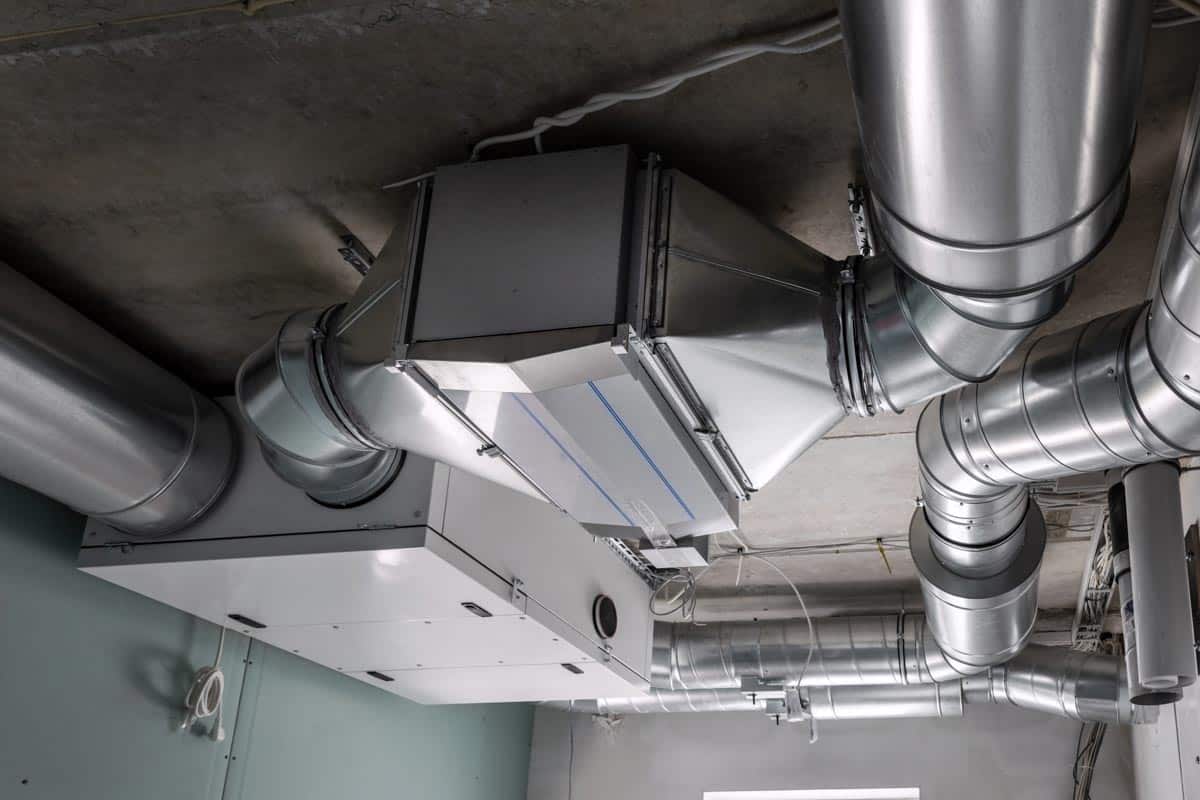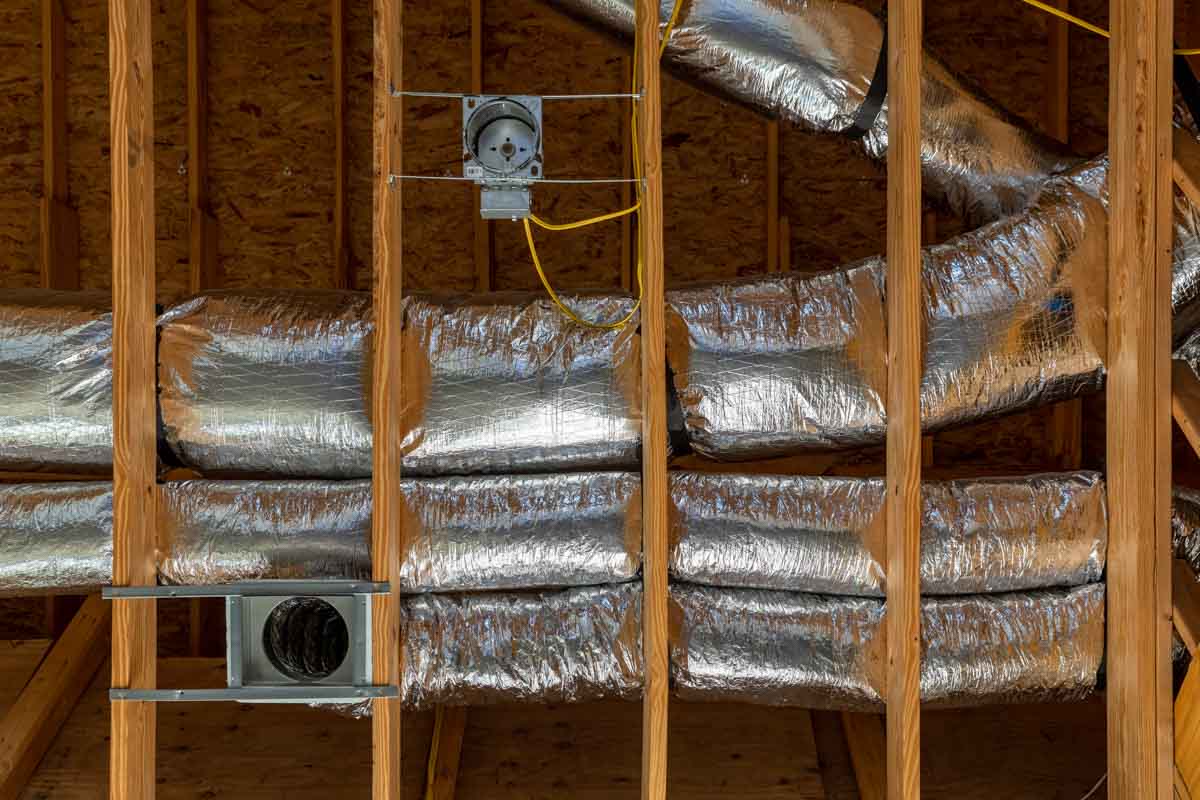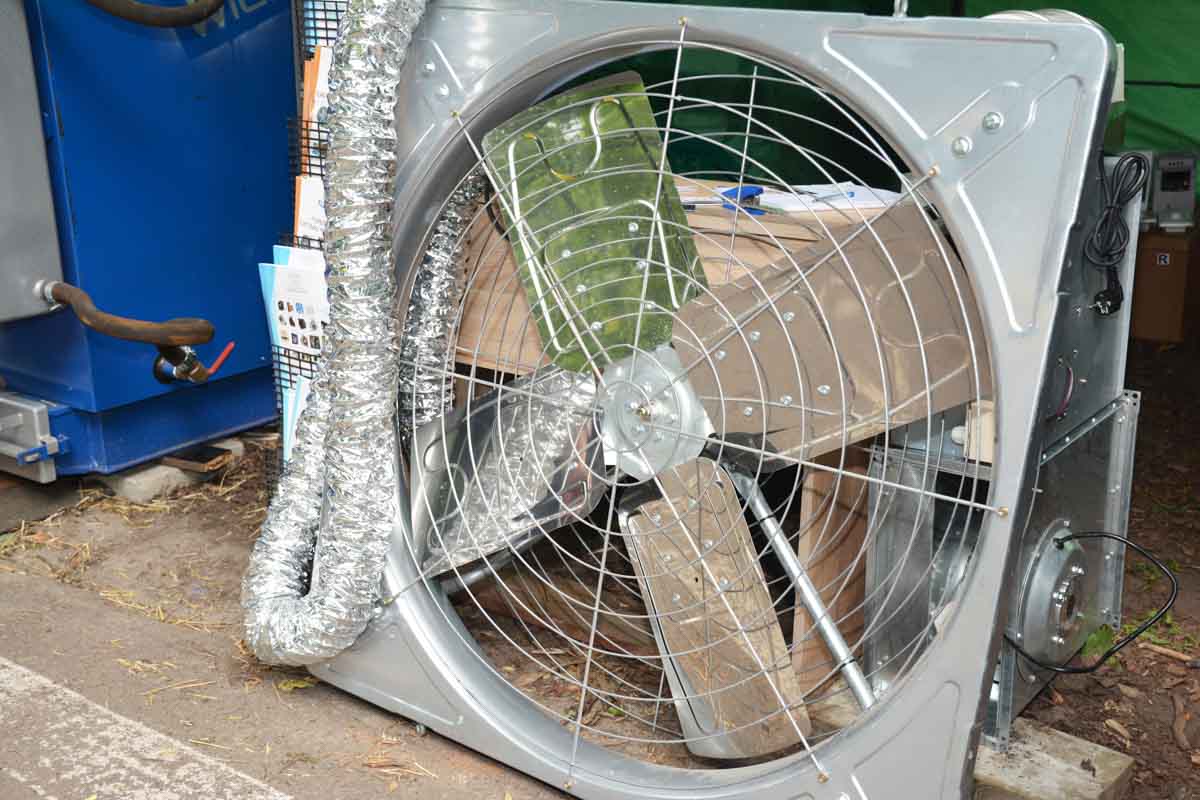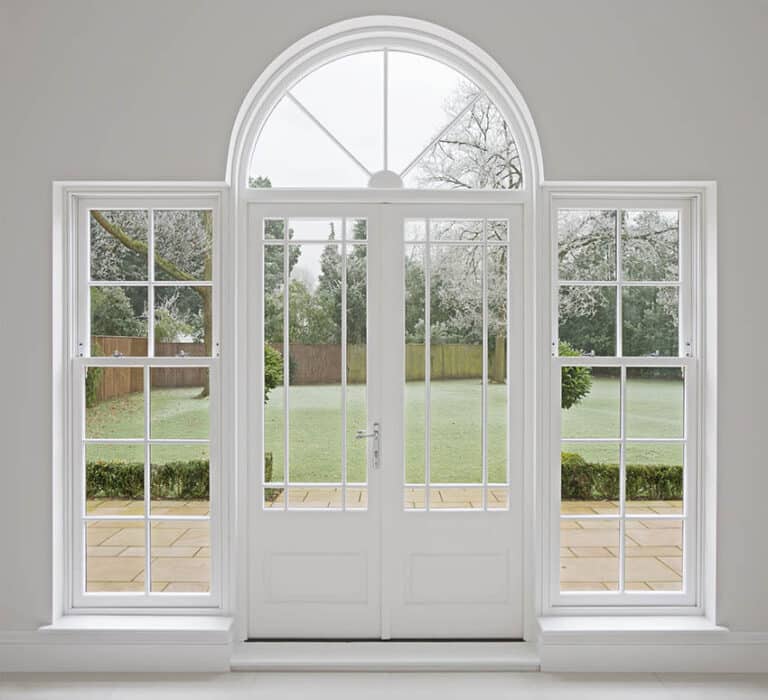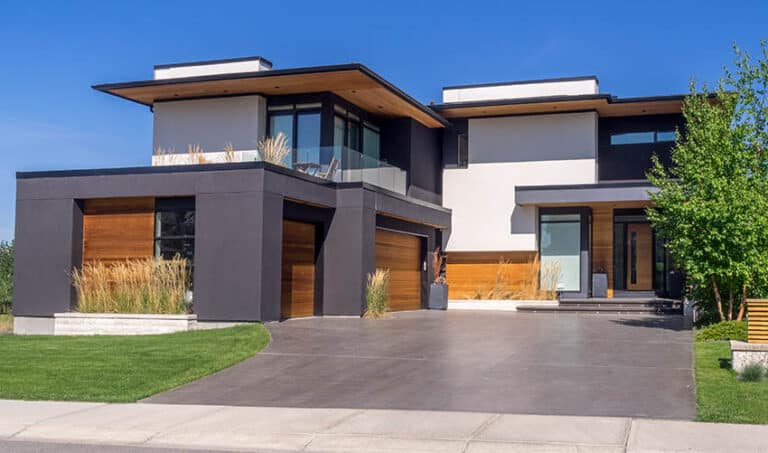Whole House Fan Pros and Cons (Are They Good or Bad?)

Thermal comfort is important for healthy and more productive living, especially in our homes, where we spend most of our time. In addition, fresh and healthy indoor air contributes to that level of comfort, and the ventilation systems available today allow you to enjoy thermal comfort all year round.
However, finding your home’s best cost-effective ventilation system can be costly and energy-consuming. EIA, or Energy Information Agency, states that most households spend as much as 12% of energy costs when using air conditioning units.
Switching to passive or cross-ventilation systems can provide some level of cooling but is not as effective as an air-conditioner. With a whole house fan, you can complement or meet the needed cooling efficiency in a home without spending much as running an air-conditioning unit. [toc]
What is a Whole-House Fan?
A whole house fan mechanical ventilation system primarily uses a large fan installed at an attic or knee wall. The axial force draws cool air in from the outdoors and draws out heat air from the indoors. This airflow uses the principle of natural ventilation, but instead of relying on air pressure differences between the outdoor and indoor for airflow, the whole house fan utilizes the mechanical fan to draw cooler air.
Typically, a whole house fan is installed into the highest part of the ceiling below an attic. – Green$ense for the Home Rating the Real Payoff from 50 Green Home Projects, Eric Corey Freed, Kevin Daum
Whole-house fans will have a fan unit, which is the main component of a whole-house system. The unit operates in an axial or linear force or where air is drawn parallel to the axis of the fan’s rotation.
The needed airflow of a whole house fan depends on the area of the home, and the recommended airflow per square foot of living space is 1.5 to 3 CFM. Another factor to consider is the structure’s location, personal preferences, manufacturer’s recommendations, and personal preference.
Types of Whole House Fans – According to Location
• Ceiling-mounted
• Attic-mounted
• Ducted Whole House Fans
• Roof-mounted
The four most popular ventilation systems for entire homes include exhaust, supply, balanced, and energy recovery. A whole house system falls most closely under the exhaust category. For a detailed breakdown of the types of whole-house ventilation systems available, visit this Energy Saver page.
Aside from opening windows or doors during use, there is a need to have vents in attics. This is where hot air escapes during the operation of the whole house fan. It also has louvers that automatically open when the appliance is turned on.
Newer models are more efficient than their predecessors. It uses less electricity and has improved motor turbines and blade design. Some models have less noise in conjunction with the use of dampers.
Whole house fans have been used since the 1950s and 1960s, giving homeowners cheaper alternatives. Today, this appliance have significantly improved with better materials and component design. There are also accessories like operational controls available to enhance their functionality and convenience.
Whole Home Fan Advantages
Uses less electricity and can be powered with solar energy: A typical air conditioner consumes around 3000 watts, whereas a whole house fan uses around 500 watts. With this huge disparity and power consumption, the latter can be powered by a decent solar panel, reducing power costs and usage.
Healthier indoor air quality: Because a whole house fan facilitates continuous air exchange between the outdoors and the indoors, the flowing air lessens the potential growth of bacteria and viruses.
Provides a comfortable temperature: Cooling down the internal temperature inside the house is the main reason we install air conditioners or use electric fans, swamp coolers, etc. The beauty of this appliance is that it is capable of lowering interior temperature as far as 10 degrees Celsius.
The attic is the culprit for why interior temperature inside the homes rises, and if that heat cannot escape quickly, a greenhouse-like effect occurs. With this appliance, the efficacy of warm air convection is increased, allowing warm air to escape quickly.
Used alternatively with an air-conditioning system: A whole house fan can be turned on during a mild and dry climate and turned off to turn on an air-conditioning system during a hot and humid climate. This ensures comfortable levels throughout the year without energy wastage and reduces energy costs.
Less risk of freon exposure: When both are installed, there is less need for turning on the air-conditioning system, reducing maintenance costs and reduced exposure to freon. The toxic substance, when inhaled, can be deadly. In addition, most air-conditioners have refrigerant R410a, a potent green gas contributor.
Rapid cooling: With the right size and proper installation, a whole house fan can cool down a home efficiently, especially if the outdoor temperature is cooler than the inside of the structure. That is why it is recommended to open windows in the evening and early morning.
Cools Quieter: Newer models, particularly the ducted versions, will need a dumper and dumper box that covers the opening into the main rooms. The dumper absorbs any vibrations that come with rotating fans, which lessens the noise. In addition, the fan blades have improved and are usually lighter and with less turbulence during operation.
Energy.gov recommends installing these units with rubber or felt gaskets to help minimize the noise produced by these cooling products.
Variable Speed Control: The benefit of newer models, is that you can adjust the variable speed control to get a more personalized temperature.
House Ventilation Fan Drawbacks
It may be insufficient for hot and humid climates: A whole house may be inadequate to cool down the structure for homes in hot and humid climates or during the hot summer months, especially with large square footage.
Also, since the whole house fan uses outdoor air, the already high-temperature air intake will only increase the temperature indoors.
Potential for intaking pollution and allergens: Ironically, while fresh air can help reduce bacterial growth, a fan drawing air from the outside can also bring in harmful materials like pollutants and microorganisms.
A typical air conditioner has an air filter that helps to mitigate these risks. Homeowners need to consider where they live and the surrounding environment’s condition.
Limited hours of cooling: For structures that are located in a dry and hot region, whole house fans can work overtime during hotter hours from late morning to early afternoons, as the air outdoors is hot and humid.
It can take room in the attic: Although whole house options are mounted on the roof and knee wall, they may be less efficient in reducing the attic heat compared to the duct system.
Complex installation: The technicians installing this hardware will have to make calculations first to determine the right type of fan size to use for a given space. Then comes the need to open holes in the attic and most ceiling design types, routing the duct through these holes, etc.
A technician will also need to inspect to make sure that the installation is done properly. For safety, the fans should be guarded by grills to prevent fingers from accidentally touching spinning blades. Access to the attic will also be restricted to family members, specifically the adults.
Effectiveness: A moderately-sized home with ideal climate conditions can be cooled immediately in less than an hour. As such, cooling time will vary according to the mentioned factors, but in general, the whole house fan cools faster and more efficiently compared to ordinary ceiling fans and even with an air conditioner.
The mechanical ventilation system is also more cost-effective as it costs around 70% less to operate compared to an air conditioning unit but can effectively cool down a room in under an hour.
Energy Efficiency: A whole house fan can operate from 500 to 1000 watts using a third of electricity compared to an air-conditioning unit. At the same time, an air-conditioning unit operates from 2,500 to 3,000 watts. Less energy used means the possible use of alternative sources of energy, such as solar power.
Safety: When properly installed with a quality-made whole-house fan, the vent system is a safe cooling system. There will be a need for installing grills or guard covers over fan blades and access to the attic or roof area where the whole house fan is installed.
Roof-mounted whole-house fans, in particular when inadequate attic space or ventilation is provided, can cause heat to build up. For this reason, it is best to get professional advice before installing a complex mechanical system.
Attic Fan vs. House-wide Ventilation
The difference between the two is that the whole house fan, as the term implies, cools down the whole home’s interior, while the attic fan is dedicated to venting out the air in the attic space.
A whole house fan can serve as an attic fan, but an attic fan operates as a whole house fan. Most attic ventilation fans actually have built-in humidistat controls to address moisture issues.
Are Residential Ventilation Systems Good or Bad?
Mechanical vent systems usually have a lesser impact on the environment and health. This is because it uses less energy and typically operates with zero, if not with limited chemical components.
For instance, air conditioners need a toxic gaseous substance called freon to operate. A person can inhale the leaked freon, which can potentially cause sickness and even death.
A whole house fan is best for homes with a large enough attic that is situated in a location with a moderately dry climate. Even if you only have a side attic, you can still have contractors install vertical adapters to help benefit from a house cooling fan.
Furthermore, whole house fans use natural air and can expel hot indoor air along with any bacteria or other harmful pollutants.
Older versions of whole fans are recommended to be replaced as newer versions of the mechanical system are more energy efficient, effective, and safer in cooling. It is advisable to consult a professional HVAC installer and check for any local building ordinances regarding installing whole-house fans.
See more related content in our article about the different types of attic fans on this page.



